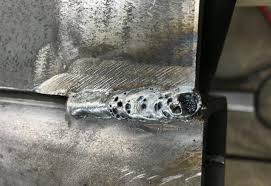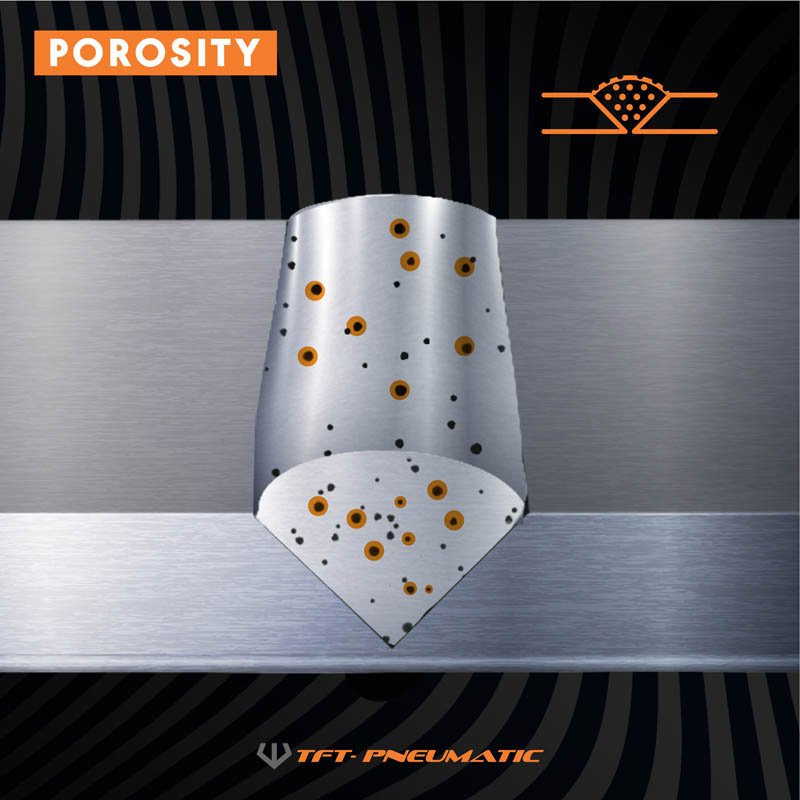Discover What is Porosity in Welding and Its Impact on Structural Integrity
Deciphering the Enigma of Porosity in Welding: Tips for Lessening Defects and Making Best Use Of Quality
In the detailed world of welding, porosity remains a relentless difficulty that can significantly impact the top quality and stability of welded joints. Understanding the aspects that add to porosity development is crucial in the quest of remarkable welds. By unraveling the enigma of porosity and executing effective methods for problem reduction, welders can elevate the criteria of their work to attain exceptional top quality results. As we dive into the midsts of porosity in welding, uncovering the keys to its prevention and control will certainly be paramount for experts seeking to grasp the art of high-quality weldments.
Comprehending Porosity in Welding
Porosity in welding, an usual concern experienced by welders, describes the visibility of gas pockets or voids in the welded material, which can endanger the honesty and high quality of the weld. These gas pockets are normally entraped throughout the welding process because of different aspects such as improper protecting gas, polluted base products, or wrong welding parameters. The formation of porosity can weaken the weld, making it at risk to breaking and rust, eventually bring about architectural failings.
By recognizing the value of keeping appropriate gas shielding, ensuring the sanitation of base materials, and optimizing welding setups, welders can dramatically minimize the possibility of porosity development. Generally, a detailed understanding of porosity in welding is important for welders to generate top quality and long lasting welds.

Common Sources Of Porosity
When checking welding processes for possible high quality issues, recognizing the common reasons of porosity is necessary for maintaining weld honesty and avoiding architectural failures. Porosity, identified by the existence of dental caries or spaces in the weld steel, can substantially compromise the mechanical buildings of a welded joint.
An additional prevalent root cause of porosity is the presence of wetness and impurities externally of the base steel or filler material. When welding products are not properly cleaned up or are revealed to high levels of humidity, the evaporation of these contaminants during welding can develop spaces within the weld bead. Additionally, welding at incorrect specifications, such as excessively high traveling rates or currents, can generate extreme disturbance in the weld pool, trapping gases and creating porosity. By attending more helpful hints to these typical causes with appropriate gas shielding, material prep work, and adherence to ideal welding criteria, welders can decrease porosity and enhance the high quality of their welds.
Methods for Porosity Prevention
Executing efficient precautionary procedures is critical in minimizing the occurrence of porosity in welding processes. One technique for porosity prevention is ensuring correct cleaning of the base steel before welding. Pollutants such as oil, grease, rust, and paint can result in porosity, so extensive cleansing utilizing suitable solvents or mechanical techniques is vital.

Using top notch filler products and securing gases that are appropriate for the base metal and welding procedure can substantially decrease the risk of porosity. In addition, preserving click here for more info correct welding criteria, such as voltage, current, travel rate, and gas circulation rate, is essential for porosity prevention.
Furthermore, utilizing proper welding strategies, such as preserving a consistent traveling speed, electrode angle, and arc size, can help stop porosity (What is Porosity). Sufficient training of welders to guarantee they comply with ideal methods and quality control procedures is additionally necessary in minimizing porosity issues in welding

Ideal Practices for Top Quality Welds
One secret technique is keeping correct cleanliness in the welding area. Extensively cleaning the workpiece and surrounding location prior to welding can aid reduce these concerns.
One more finest method is to thoroughly select the appropriate welding parameters for the specific materials being joined. Appropriate criterion selection guarantees ideal weld infiltration, fusion, and total top quality. Utilizing premium welding consumables, such as electrodes and filler metals, can considerably impact the last weld high quality.
Significance of Porosity Control
Porosity control plays an important function in making certain the integrity and quality of welding joints. Porosity, defined by the existence of tooth cavities or voids within the weld metal, can dramatically endanger the mechanical homes and architectural honesty of the weld. Excessive porosity deteriorates the weld, making it extra prone to cracking, corrosion, and total failing under functional loads.
Reliable porosity control is essential for keeping the wanted mechanical buildings, such as stamina, ductility, and toughness, of the bonded joint. What is Porosity. By minimizing porosity, welders can improve the total quality and integrity of the weld, guaranteeing that it fulfills the performance demands of the desired application
Additionally, porosity control is essential for achieving the preferred visual appearance of the weld. Extreme porosity not just weakens the weld however additionally diminishes its visual charm, which can be critical in markets where appearances are necessary. Appropriate porosity control strategies, such as navigate here using the appropriate protecting gas, regulating the welding parameters, and guaranteeing appropriate sanitation of the base products, are important for creating top notch welds with marginal defects.

Verdict
Finally, porosity in welding is a typical problem that can endanger the high quality of the weld. By comprehending the root causes of porosity and executing proper avoidance techniques, welders can decrease defects and accomplish better welds. It is necessary to manage porosity in welding to make sure the integrity and stamina of the final item. Executing ideal methods for porosity control is crucial for accomplishing optimal welding results.